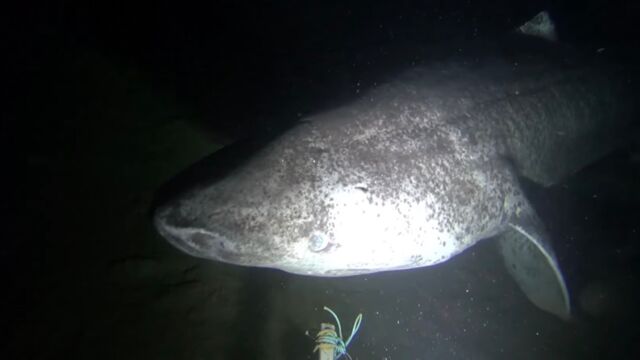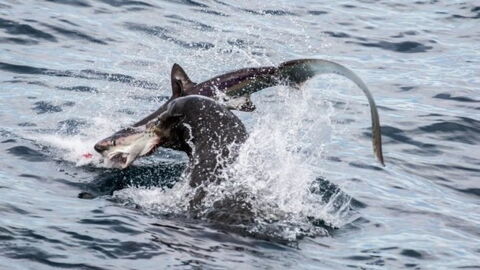When we hear the term shark, we automatically think of the great white or whale shark, both of which are incredible species. But there are so many more amazing species out there albeit less common. These video pictures give a comprehensive overview. Captured by scientists in the underwater depths of the Canadian Arctic, the images show the slow progression of an animal as strange as it is rare.
Discover our latest podcast
‘Sampling at extreme depths and in seasonally ice-covered waters is especially difficult’ declared the two scientists behind the discovery, in an article on news website, The Conversation. Brynn Devine and Jonathan Dempsey, biologists at the Memorial University of Newfoundland claim that their findings give a ‘valuable insight into the abundance, size and behaviour’ of the Greenland shark.
Their incredible discoveries took place between the months of July and September 2015 and 2016, as stated in the journal, Scientific Reports, at the end of January. Two successive periods, during which the marine biologist duo were simply trying to probe the depths of the ocean, in search of life. The operation was conducted using a series of weighted underwater cameras, 31 in total, deposited at various points on the ocean floor off the Canadian federal territory of Nunavut.
Almost fortuitous observations
‘We just put them in place and forgot about them for eight hours’ says Brynn Devine. The scientists’ were hoping to capture images of common organisms such as shrimps or sea snails. However, the results of the recording campaign exceeded all their expectations. In almost 80% of the sequences, the biologists were undeniably surprised to observe the mysterious animal.
In total, more than 142 specimens were captured on camera, which collected nearly 250 hours of video footage. From the recordings, Brynn Devine and Jonathan Dempsey were able to observe the slow swimming of Greenland sharks, a rare activity of the Greenland shark. The size of the sharks observed varied between 5 and 10 feet.
According to the scientists, this meant that the sharks that they observed were probably young animals. Adult sharks can usually measure between 9 and 14 feet long and weigh up to 900 lb. It is therefore one of the largest species in the family Somniosidae.
Life in slow motion
According to specialists of the species, the Greenland shark is only able to reproduce at around the age of 151, an advanced age that might seem unbelievable at first but that actually, isn’t surprising at all. With an average life expectancy of 500 years, Greenland sharks are the world’s longest living vertebrates.
Older Greenland sharks, although alive and well, often have a frightening appearance. The eyes of the species resemble that of a spectre and are often surrounded by parasitic worms clinging to his skin. Their mouths remain permanently open, allowing it to capture its prey which can sometimes be the carcasses of deceased polar bears.
Despite their appearance and threatening mannerisms, these animals are actually very vulnerable. They are often over fished, their habitat is often broken up and of course, climate change has a huge impact. Global warming is causing the ice on top of the Arctic Ocean to melt. A phenomenon which is consequently leaving creatures like the Greenland shark, severely vulnerable.
‘It is important that we understand the living environment of these creatures, big and old’ says Brynn Devine. Surprising and mysterious, the Greenland shark has not finished intriguing the scientific community.
Check out the video above to see the footage for yourself!















